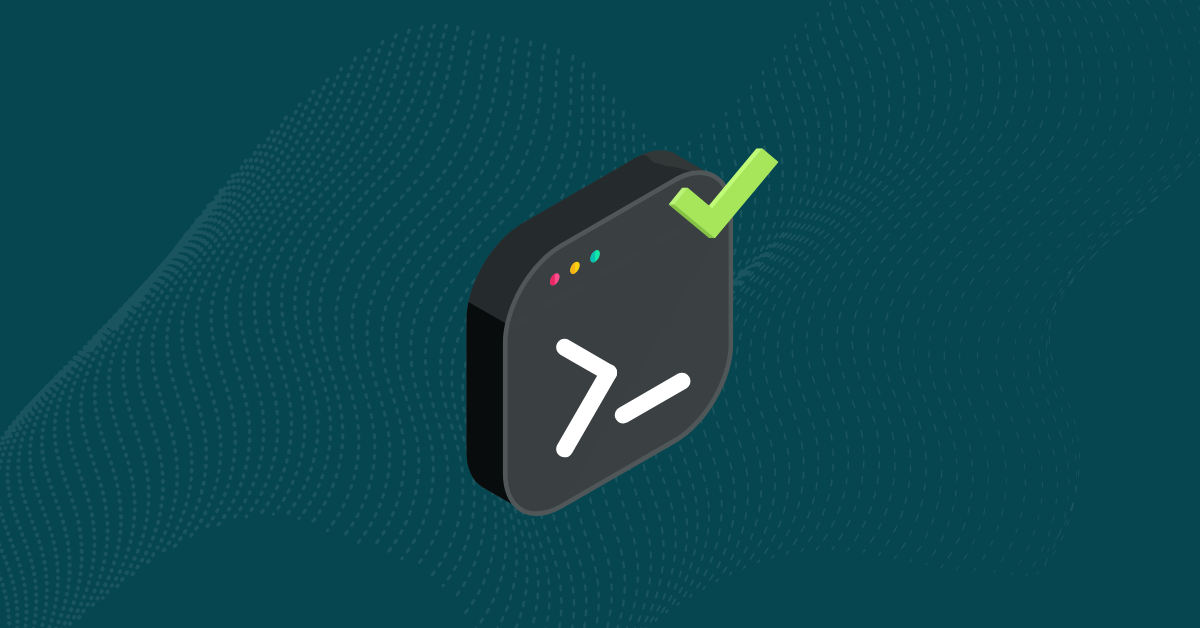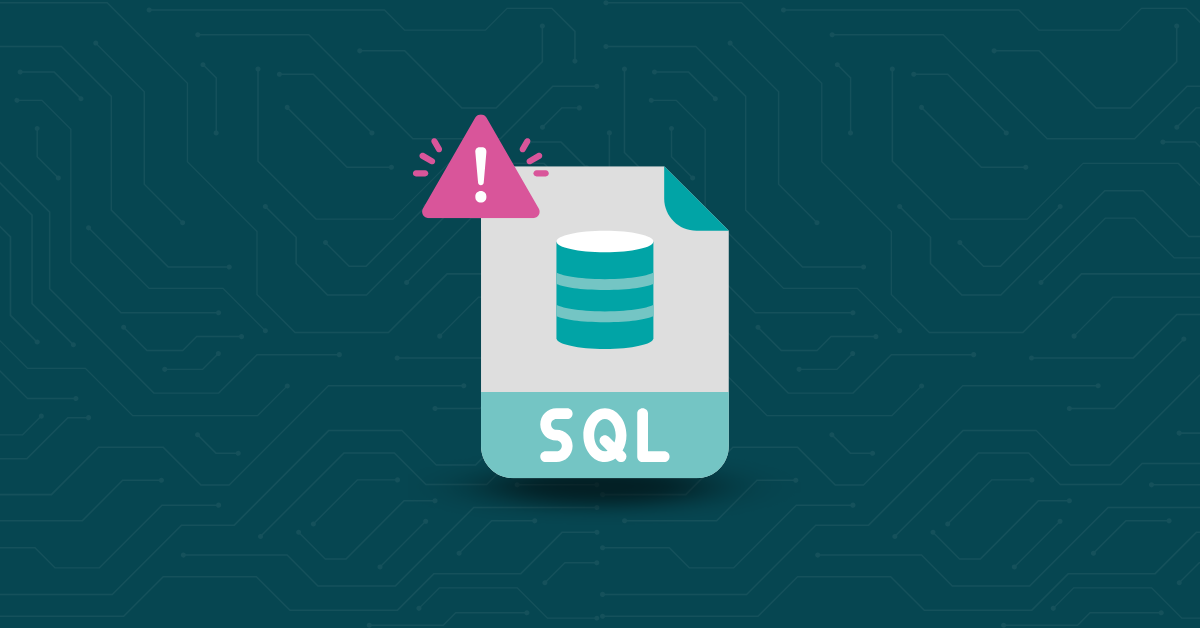

SQL injection (SQLi) is one of the oldest and most dangerous security vulnerabilities, enabling attackers to manipulate database queries, steal sensitive data, or even take full control of a system. That’s why many devs are wondering how to stop SQL injection attacks before they happen.
Despite decades of awareness, SQL injection remains a top attack vector for several reasons, including unsafe query construction and unvalidated user input. If your application interacts with a database, taking steps to actively prevent SQL injection is fundamental to security. This guide walks through five best practices to stop SQL injection attacks before they start.
SQL injection is a code injection technique that allows attackers to manipulate an application’s database by inserting malicious SQL queries via input fields. If applications don’t properly validate or sanitize user-supplied input and its syntax, attackers can essentially send malicious sql statements that bypass authentication, extract sensitive data, modify records, or even take control of the entire database.
SQL injection exploits weaknesses in how applications handle user input. When these weaknesses exist, an attacker can manipulate an application into executing unintended SQL commands, often leading to data exfiltration, authentication bypass, and even full system compromise. Common scenarios that make applications vulnerable to SQL injection include:
SQL injection attacks, or SQLi attacks, are a prevalent threat that lead to significant data breaches and financial losses. Below are real-world examples from recent years, illustrating the impact of such vulnerabilities.
Between November and December 2023, the hacking group known as ResumeLooters compromised over 65 websites, primarily targeting recruitment and retail in India, Taiwan, Thailand, Vietnam, and China. Utilizing SQL injection and cross-site scripting (XSS) attacks, they extracted databases containing over two million user records, including names, emails, and phone numbers. The stolen data was subsequently sold on various cybercrime platforms.
Identified in December 2023, the threat actor dubbed GambleForce launched SQL injection attacks against 24 organizations across eight countries, predominantly in the Asia-Pacific region. Their targets included entities in the gambling, government, retail, and travel sectors. The group exploited vulnerabilities in content management systems to steal sensitive information, such as user credentials and hashed passwords.
In February 2024, researchers discovered a critical SQL injection vulnerability (CVE-2024-1071) in the Ultimate Member WordPress plugin, which had over 200,000 installations. This flaw allowed unauthenticated attackers to append malicious SQL queries, potentially extracting sensitive data from databases. The vulnerability was promptly addressed in version 2.8.3 of the plugin.
In 2023, attackers exploited a critical zero-day SQL injection vulnerability (CVE-2023-34362) in Progress Software’s MOVEit Transfer platform. The Cl0p ransomware gang leveraged this flaw to deploy web shells, steal sensitive data, and execute operating system commands, ultimately affecting numerous organizations relying on the platform for secure file transfers.
In February 2025, South Korean company BusinessOn, which operates the ‘SmartBill’ electronic tax invoice service, suffered an SQL injection attack. The breach resulted in the leakage of member information for 179,386 accounts. Consequently, BusinessOn faced fines totaling ₩200 million for inadequate data protection measures.
If you want to prevent SQL injection attacks (and who doesn’t?), the most effective way is through layered security. This doesn’t mean just fixing one weak spot but rather reinforcing protections at every stage, from input validation to SQL database hardening and continuous monitoring. The following best practices provide a multi-layered defense, ensuring that even if one control fails, others are in place to mitigate the risk.
If you have one takeaway from this guide, let it be this: never trust user input. SQL injection almost always starts with unvalidated or improperly sanitized input fields, allowing attackers to insert malicious SQL code.
Input validation makes it so that user-supplied data meets expected formats before it’s processed. This prevents attackers from sneaking in SQL commands through form fields, cookies, headers, or query strings. Effective input validation looks like this:
Many developers focus on securing form inputs but forget that SQL injection can also come from:
User-Agent, Referer, etc.) to inject SQL payloads.The bottom line: Filter and validate all user-supplied data, no matter where it comes from.
Once you have strict input validation in place, the next step in the effort to prevent SQL injection attacks is to guarantee that user input is never directly inserted into an SQL query. This is where parameterized queries and prepared statements come in.
A common mistake developers make is building SQL queries dynamically by concatenating user input into query strings. This is exactly how SQL injection happens. Consider this vulnerable query written in Python:
cursor.execute("SELECT * FROM users WHERE username = '" + user_input + "' AND password = '" + password + "';")
If an attacker enters admin' -- as the username, then the query becomes:
SELECT * FROM users WHERE username = 'admin' --' AND password = '';
Everything after — is treated as a comment, effectively going right past the authentication.
If you’re still building queries with string concatenation, stop immediately and switch to parameterized queries. This is one of the simplest and most effective ways to shut down SQL injection attacks. Here’s an example in Python using SQLite:
cursor.execute("SELECT * FROM users WHERE username = ? AND password = ?", (user_input, password))
And in Java with JDBC:
PreparedStatement stmt = connection.prepareStatement("SELECT * FROM users WHERE username = ? AND password = ?");
stmt.setString(1, user_input);
stmt.setString(2, password);
By using placeholders (? or @param, depending on the database and framework), the database engine treats the input as data, not executable SQL—eliminating injection risks.
ORMs (object-relational mappers) like Hibernate, SQLAlchemy, and Entity Framework automatically handle query binding, reducing SQL injection threats. Stored procedures encapsulate query logic within the database, limiting direct interactions with raw SQL. However, design them securely because dynamic SQL within stored procedures can be vulnerable.
Even with input validation and secure queries, SQL injection risks don’t stop at the application level. If an attacker somehow exploits a vulnerability, your database’s security posture determines how much damage they can do. That’s why enforcing the least privilege and hardening your database configuration is critical.
The idea behind least privilege is simple: Users and applications should have only the minimum permissions required to perform their tasks. This limits the blast radius of a successful SQL injection attack.
This means that applications should never connect as an admin or root user. Use a dedicated database account with only the required permissions. Enforce read-only roles where applicable. If an application only needs to fetch data, it shouldn’t have INSERT, UPDATE, or DELETE privileges. Finally, separate accounts for different functions. For example, one account can be used to read data and another for modification.
Do use a limited user with only necessary permissions. Don’t connect to the SQL database as sa (SQL Server) or root (MySQL).
If an attacker can execute a malicious SQL query, a well-configured database with the least privilege enforcement can prevent them from doing severe damage. In fact, database misconfigurations often make SQL injection far worse than it needs to be. Here’s how to lock things down:
EXECUTE IMMEDIATE, sp_executesql), disable it.SQL injection goes beyond being a code-level issue—and you need defensive layers beyond simply just the application. Even with strong input validation, secure queries, and database hardening, attackers will still probe for weaknesses. That’s where network and application-layer defenses come into play.
WAFs, monitoring, and network segmentation won’t fix bad code, but they add critical security layers that make SQL injection attacks harder to execute and easier to detect.
A web application firewall (WAF) acts as a filter between your application and the internet, analyzing incoming requests for known attack patterns, including SQL injection payloads. WAFs offer several benefits:
But a word of caution: A WAF isn’t foolproof. While they are a good layer of defense, they should never be relied on as a substitute for proper coding (like parameterized queries).
Attackers don’t always succeed on the first try—but that doesn’t mean they just give up and go away. Ongoing listening and logging can help detect suspicious activity before real damage is done. Best practices for SQL injection detection include:
Log everything, including SQL errors and failed authentication attempts, but don’t expose sensitive data. Never store full query logs where they’re publicly accessible.
Network-level protections are another important part of the conversation. When it comes to those, make sure to isolate the database from the application server using separate network segments. Use a VPN or private network instead of exposing database ports to the internet. Finally, seal it off by blocking direct database access from external sources.
Security isn’t a “set it and forget it” process. New SQL injection techniques emerge, software changes, and configurations drift over time. That’s why ongoing security practices—like code audits, penetration testing, and patch management—are key to staying ahead of threats, even as those threats evolve.
We’re all human, so even if your team follows best practices, mistakes happen. Regularly reviewing your codebase helps identify vulnerabilities before attackers do. That’s why regular security audits of code are smart. Here are a few tips to keep in mind:
Security teams use penetration testing (pen testing) to simulate real-world attacks and uncover security weaknesses. Security testers use the same techniques as hackers to find application vulnerabilities before they are exploited. Conduct a pentest before launching a new application or feature, after significant code changes or database migrations, and regularly as part of a security program.
Attackers love outdated software because it’s full of known vulnerabilities. Thus, simply keeping your systems up to date is one of the easiest ways to prevent SQL injection attacks. Apply security updates promptly for databases, frameworks, and libraries. Monitor security advisories for tech stack vulnerabilities. You may be able to automate these update processes, too.
SQL injection vulnerabilities can be introduced at the code level—and that’s exactly where static application security testing (SAST) tools excel. SAST tools scan for patterns and coding practices that indicate potential SQL injection risks. By flagging these issues early, SAST tools help developers catch vulnerabilities before they reach production.
The best way to protect your application is to find vulnerabilities before attackers do. Kiuwan’s static application security testing (SAST) helps developers detect SQL injection risks before they become a threat. By analyzing source code for unsafe patterns, Kiuwan provides actionable insights to harden your application’s security from the inside out.
Ready to see how it works? Request a free demo of Kiuwan today!
SQL injection specifically targets databases, manipulating SQL queries to extract or alter data. Other injection attacks, like command or LDAP injection, exploit different interpreters. The common theme? Untrusted input is being executed as code.
Even if an attacker finds a way to inject SQL, proper database configurations can limit the impact. By enforcing these settings, you add an extra layer of defense in case an injection attempt bypasses input validation and query language security. Developers should:
xp_cmdshell, EXECUTE IMMEDIATE, etc.).mysql_real_escape_string() in older MySQL versions).While PreEmptive focuses on application obfuscation and runtime protection, it plays a key role in defending against reverse engineering and tampering. If an attacker tries to inject malicious SQL into a compromised application, PreEmptive can help prevent code manipulation and unauthorized modifications—a critical piece of the security puzzle.
Although testing tools like Ranorex and TestRail aren’t security scanners, they can help validate input handling and ensure applications behave as expected. For example, Ranorex automates test cases that check how an application processes user inputs to identify unexpected behaviors— TestRail can track security test cases so that input validation and query handling are tested consistently across releases.
Relying only on input validation. While input validation is important, it should never be the primary defense because attackers can find ways to inject malicious SQL through unexpected vectors (e.g., HTTP headers, cookies, API requests).
Use SAST tools (like Kiuwan) to detect risky SQL patterns in source code. Manually test input fields by injecting basic SQL payloads (' OR 1=1 --). Perform penetration testing to simulate real-world attacks. Check for verbose error messages that reveal SQL query details. Finally, always test in a controlled environment, never in production!


